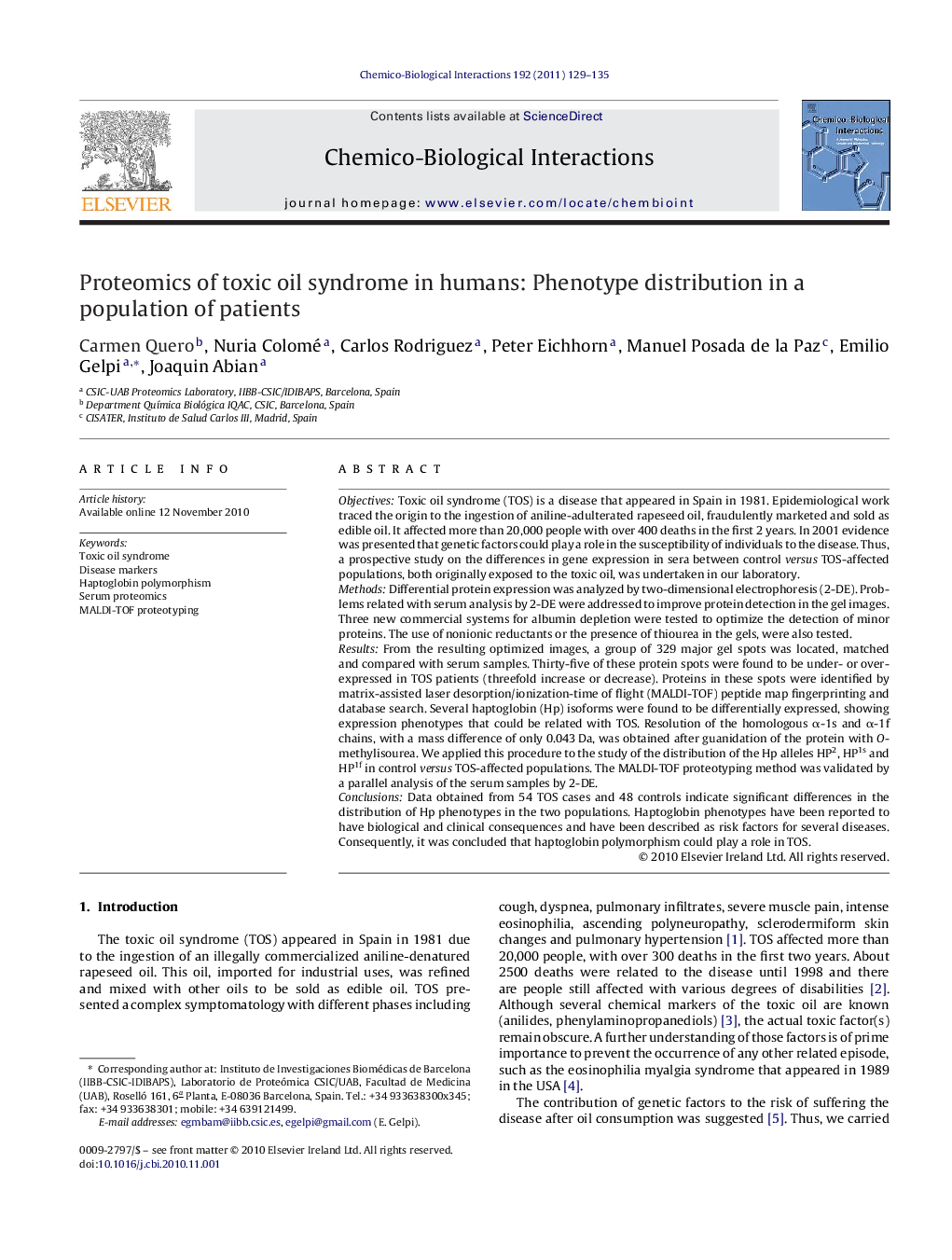| کد مقاله | کد نشریه | سال انتشار | مقاله انگلیسی | نسخه تمام متن |
|---|---|---|---|---|
| 2581027 | 1561642 | 2011 | 7 صفحه PDF | دانلود رایگان |

ObjectivesToxic oil syndrome (TOS) is a disease that appeared in Spain in 1981. Epidemiological work traced the origin to the ingestion of aniline-adulterated rapeseed oil, fraudulently marketed and sold as edible oil. It affected more than 20,000 people with over 400 deaths in the first 2 years. In 2001 evidence was presented that genetic factors could play a role in the susceptibility of individuals to the disease. Thus, a prospective study on the differences in gene expression in sera between control versus TOS-affected populations, both originally exposed to the toxic oil, was undertaken in our laboratory.MethodsDifferential protein expression was analyzed by two-dimensional electrophoresis (2-DE). Problems related with serum analysis by 2-DE were addressed to improve protein detection in the gel images. Three new commercial systems for albumin depletion were tested to optimize the detection of minor proteins. The use of nonionic reductants or the presence of thiourea in the gels, were also tested.ResultsFrom the resulting optimized images, a group of 329 major gel spots was located, matched and compared with serum samples. Thirty-five of these protein spots were found to be under- or over-expressed in TOS patients (threefold increase or decrease). Proteins in these spots were identified by matrix-assisted laser desorption/ionization-time of flight (MALDI-TOF) peptide map fingerprinting and database search. Several haptoglobin (Hp) isoforms were found to be differentially expressed, showing expression phenotypes that could be related with TOS. Resolution of the homologous α-1s and α-1f chains, with a mass difference of only 0.043 Da, was obtained after guanidation of the protein with O-methylisourea. We applied this procedure to the study of the distribution of the Hp alleles HP2, HP1s and HP1f in control versus TOS-affected populations. The MALDI-TOF proteotyping method was validated by a parallel analysis of the serum samples by 2-DE.ConclusionsData obtained from 54 TOS cases and 48 controls indicate significant differences in the distribution of Hp phenotypes in the two populations. Haptoglobin phenotypes have been reported to have biological and clinical consequences and have been described as risk factors for several diseases. Consequently, it was concluded that haptoglobin polymorphism could play a role in TOS.
Journal: Chemico-Biological Interactions - Volume 192, Issues 1–2, 30 June 2011, Pages 129–135